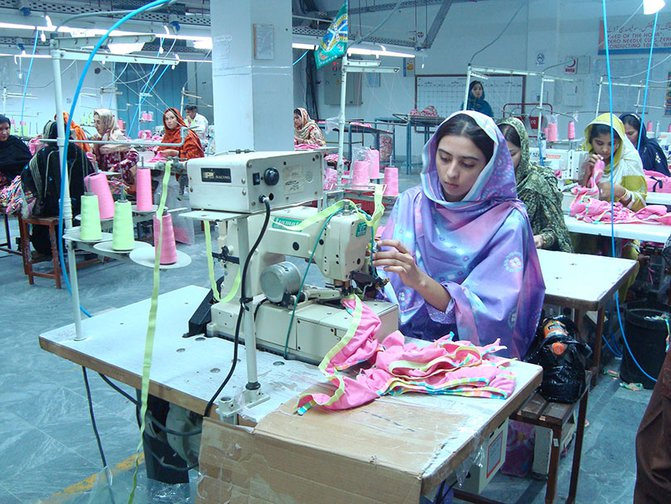Claudia Goldin, a distinguished US labour economist at Harvard University, has been awarded the prestigious Nobel Economics Prize 2023 by The Royal Swedish Academy of Sciences. “This year’s Laureate in the Economic Sciences, Claudia Goldin, provided the first comprehensive account of women’s earnings and labour market participation through the centuries,” the prize-giving body said in a press release on October 9.
Goldin has achieved the remarkable distinction of being the third woman awarded the Nobel Economics Prize. Notably, she is also the first woman to receive this honour solely, without sharing it with any other recipient. It is worth noting fact that a significant gender disparity exists among Nobel Laureates in the field of economics, with 90 out of 93 laureates being men.
Goldin’s research encompasses various subjects, such as the female labour force, the disparity in earnings between genders, income inequality, technological advancements, education, and immigration. Her research primarily focuses on interpreting the present phenomena by examining them through the lens of the past.
The scholastic contribution of Goldin is crucial in the pursuit of gender parity– equal contribution of women and men across all aspects of life. The importance of gender parity always remains a topic of concern among international communities. The significance of gender parity arises from its inclusion into the Millennium Development Goals (MDGs) and, subsequently, the Sustainable Development Goals (SDGs).
The SDGs encompass a comprehensive set of 17 interconnected objectives. These goals have been strategically formulated to act as a universal framework to foster peace and prosperity for humanity and the planet. Their purpose extends to the present and future generations, making them a crucial shared blueprint. Currently, SDG 5 focuses on achieving gender equality and empowering all girls. This goal comprises nine distinct targets and fourteen indicators used to evaluate the performance of these targets.
Gender equality is a crucial consideration in the development process. The bridging of the gender gap is imperative to uphold a just and impartial distribution of individuals within a given population. In order to effectively address this matter, it is imperative to implement a wide range of comprehensive socio-economic policy measures.
The global economies are currently making efforts to address the gender gap, as evidenced by the findings of the Global Gender Gap report. According to the report, the overall score has experienced a slight increase from 68.1 to 68.4 in 2023, indicating a positive change of 0.3 scale points compared to the previous year’s edition.
The gender gap in Pakistan is not portraying a satisfactory position but rather a more vulnerable one. Pakistan is ranked 142 out of 146 countries, with an overall score of 57.5 on the gender gap index scale. The gender gap index is a comprehensive metric encompassing various dimensions, including economic participation and opportunities, educational attainment, health and survival, and political empowerment.
In the realm of women’s economic participation in Pakistan, a notable discrepancy is evident in the various labour market indicators. In this particular case, according to the Pakistan Labour Force Survey’s report, it is observed that the unemployment rate among females is 8.9 percent, which is higher than the unemployment rate of 5.5 percent among males. The male labour participation rate is approximately 70 per cent, whereas the female participation rate is comparatively lower, hovering around 20 per cent.
Within the cohort of employed females, a notable majority, specifically 64.4 percent, lack formal education, in contrast to 30.2 percent of males. Among the contributing family workers– individuals employed without an explicit employment contract in the company or practice of their partner or parents– the females are 55.9 percent in proportion, whereas their male counterparts only make up 10.8 per cent. The proportion of females employed in the formal non-agriculture sector is a mere 11.1 percent, significantly lower than the corresponding figure of 19.0 percent for males.
In relation to the wage disparity, a considerable proportion of females, specifically 61.1 percent, earn less than Rs 15,000 as their monthly wage. In contrast, a smaller percentage of males, around 32.6 percent, fall within the same income bracket. The median wage of female individuals engaged in paid employment is Rs 12,000, which shows a significant disparity compared to the median wage of their male counterparts, which is Rs 18,900. The gender wage gap is particularly noticeable in the self-employed sector, with female individuals in this category earning an annual income of Rs 60,000. The income of males is observed to be four times higher than that of females.
In the dynamic landscape of the modern labour market, women’s labour market outcomes are unfavourable because they face numerous challenges that hinder their professional outcomes. These challenges, amongst others, can be attributed to a lack of access to education, social norms that perpetuate gender inequality, fear of harassment, limited decision-making power, mobility constraints, the burden of household production, inadequate safety in public transportation, and a dearth of information regarding employment prospects.
Gender equality is a multidimensional aspect that not only concerns human rights but also encompasses significant implications for economic prospects. Research suggests that gender equality is associated with long-term economic growth, higher productivity, and improved working conditions. Moreover, evidence suggests that softening gender inequality favours poverty and fertility reduction, children’s welfare, and agricultural productivity.
Gender equality is a crucial consideration in the development process. The bridging of the gender gap is imperative to uphold a just and impartial distribution of individuals within a given population. In order to effectively address this matter, it is imperative to implement a wide range of comprehensive socio-economic policy measures. The primary objective of these measures should be to foster an environment that promotes equal opportunities for all members of society and also values the diverse contributions made by individuals, irrespective of their gender.























